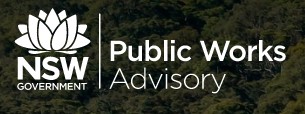Title Page
-
Road
-
Date and Time conducted
-
Conducted by
-
Location
Road alignment and cross-section
Readability by drivers
-
Is the road free of elements that may cause confusion? For example:
-
is alignment of the roadway clearly defined?
-
has disused pavement (if any) been removed or treated?
-
have old pavement markings been removed properly?
-
do tree lines follow the road alignment?
-
does the line of street lights or the poles follow the road alignment?
-
Is the road free of misleading curves or combinations of curves?
Intersections
Location
-
Are all intersections located safely with respect to the horizontal and vertical alignment?
-
Where intersections occur at the end of high-speed environments (for example, at approaches to towns), are there traffic control devices to alert drivers?
Visibility; sight distance
-
Is the presence of each intersection obvious to all road users?
-
Is the sight distance appropriate for all movements and all road users?
-
Is there stopping sight distance to the rear of any queue or slow-moving turning vehicles?
-
Has the appropriate sight distance been provided for entering and leaving vehicles?
Signs and lighting
Lighting
-
Has lighting been adequately provided where required?
-
Is the road free of features that interrupt illumination? (for example, trees or overbridges)
-
Is the road free of lighting poles that are a fixed roadside hazard?
-
Are frangible or slip-base poles provided?
-
Ambient lighting: if it creates special lighting needs, have these been satisfied?
-
Is the lighting scheme free of confusing or misleading effects on signals or signs?
-
Is the scheme free of any lighting black patches?
Markings and delineation
General issues
-
Is the line marking and delineation:
-
appropriate for the function of the road?
-
consistent along the route?
-
likely to be effective under all expected conditions? (day, night, wet, dry, fog, rising and setting sun position, oncoming headlights, etc.)
-
Is the pavement free of excessive markings? (for example, unnecessary turn arrows, unnecessary barrier lines, etc.)
Pedestrians and cyclists
General issues
-
Are there appropriate travel paths and crossing points for pedestrians and cyclists?
-
Is a safety fence installed where necessary to guide pedestrians and cyclists to crossings or overpasses?
-
Is a safety barrier installed where necessary to separate vehicle, pedestrian and cyclist flows?
-
Are pedestrian and bicycle facilities suitable for night use?
Pedestrians
-
Is there adequate separation distance between vehicular traffic and pedestrians on footways?
-
Is there an adequate number of pedestrian crossings along the route?
-
At crossing points is fencing oriented so pedestrians face oncoming traffic?
-
Is there adequate provision for the elderly, the disabled, children, wheelchairs and baby carriages? (for example, holding rails, kerb and median crossings, ramps)
-
Are adequate hand rails provided where necessary? (for example, on bridges, ramps)
-
Is signing about pedestrians near schools adequate and effective?
-
Is signing about pedestrians near any hospital adequate and effective?
-
Is the distance from the stop line to a cross walk sufficient for truck drivers to see pedestrians?
Cyclists
-
Is the pavement width adequate for the number of cyclists using the route?
-
Is the bicycle route continuous? (i.e. free of squeeze points or gaps)
-
Are drainage pit grates bicycle safe?
Ponding
-
Is the pavement free of areas where ponding or sheet flow of water could contribute to safety problems?
Parking
General issues
-
Are the provisions for, or restrictions on, parking satisfactory in relation to traffic safety?
-
Is the frequency of parking turnover compatible with the safety of the route?
-
Is there sufficient parking for delivery vehicles so that safety problems due to double parking do not occur?
-
Are parking manoeuvres along the route possible without causing safety problems? (for example, angle parking)
-
Is the sight distance at intersections and along the route, unaffected by parked vehicles?
Provision for heavy vehicles
Completion
-
Comments and recommendations
-
Audited by:











